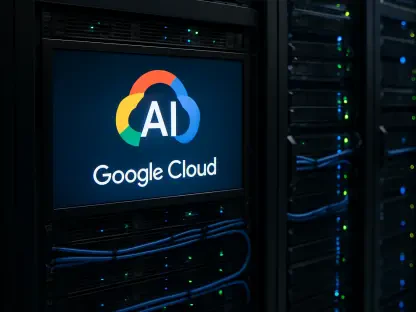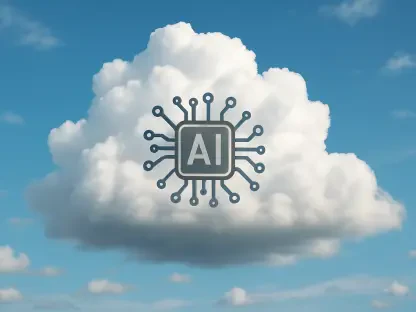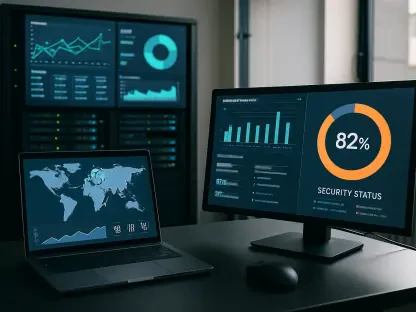Imagine a world where artificial intelligence agents from different cloud platforms can communicate effortlessly, breaking down the barriers that often silo innovation in the tech industry, and paving the way for unprecedented collaboration. This vision is becoming a reality with a groundbreaking development from a major tech player, marking a significant step toward seamless AI integration across diverse ecosystems. The introduction of an open-source protocol designed to facilitate interaction between AI agents, regardless of their hosting platform, signals a shift in how technology companies approach competition and collaboration. Announced at a prominent industry event, this initiative aims to redefine the landscape of AI services by prioritizing interoperability over proprietary constraints. As the demand for sophisticated AI solutions continues to surge, the ability of agents to exchange data and insights across cloud environments could unlock unprecedented opportunities for developers and businesses alike. This development is not just a technical advancement but a strategic move to foster a more connected and competitive market.
Pioneering Cross-Platform AI Collaboration
The newly introduced A2A (Agent 2 Agent) Protocol stands as a testament to the commitment to fostering cross-platform collaboration in the AI sector. Unveiled at a major tech conference, this open-source framework enables AI agents operating on different cloud services—be it Google Cloud, Microsoft Azure, or Amazon Web Services—to interact and share data with ease. While the protocol’s current capabilities are somewhat limited to basic interactions, there are ambitious plans to expand its functionalities over time. This could potentially transform how AI agents operate in a fragmented cloud landscape, allowing for more complex exchanges and coordinated tasks. By making the protocol accessible to all, the goal is to encourage widespread adoption among developers and tech companies, creating a standardized approach to AI communication that transcends individual platform boundaries. Such an initiative could significantly lower the technical hurdles that often impede cross-cloud projects, paving the way for more integrated AI solutions.
Beyond the technical specifics, the broader implications of the A2A Protocol highlight a strategic shift toward openness in the tech industry. This move is poised to catalyze innovation by enabling smaller players and independent developers to leverage the same interoperable tools as larger corporations. The emphasis on an open-source model ensures that the benefits of AI agent integration are not confined to a select few but are democratized across the industry. As adoption grows, the protocol could serve as a foundation for building more sophisticated AI ecosystems where agents collaborate on problem-solving, data analysis, and decision-making processes. This approach also mitigates the risk of vendor lock-in, a common concern in cloud computing, by giving businesses the flexibility to operate across multiple platforms without compatibility issues. Ultimately, this fosters a competitive environment where the focus shifts from proprietary dominance to collective advancement in AI capabilities.
Shaping the Future of AI Agent Services
AI agent services are rapidly emerging as a critical battleground for tech companies, with the potential to drive significant growth and innovation in the coming years. Industry experts predict that as these services gain traction, they will push the boundaries of AI inference capabilities, making them a cornerstone of business strategies. The ability of AI agents to perform autonomous tasks, analyze vast datasets, and provide actionable insights is transforming industries ranging from healthcare to finance. By introducing a protocol that supports cross-cloud interaction, the groundwork is being laid for a surge in market participation from developers and enterprises eager to capitalize on this trend. This competitive arena is not just about technological prowess but also about creating ecosystems where collaboration can thrive, ensuring that advancements benefit a wide array of stakeholders rather than a select few dominant players.
The strategic vision behind this initiative also underscores a commitment to balancing competition with collaboration in the AI market. By prioritizing interoperability, the aim is to create an environment where innovation is not stifled by platform-specific limitations. This is evident in the integration of various third-party models and tools within platforms like Vertex AI, which hosts a diverse range of open-source solutions alongside proprietary technologies. Such efforts reflect a broader trend of fostering open ecosystems that empower developers with flexible, cloud-native tools to build and deploy AI solutions efficiently. As more businesses enter this space, the ripple effects could redefine industry standards, encouraging a shift toward more inclusive and interconnected AI development practices. This focus on openness not only enhances technical capabilities but also positions the industry for sustained growth by aligning with the evolving needs of a global market.
Building on a Legacy of Open Ecosystems
A consistent dedication to cross-cloud integration forms the backbone of this transformative approach to AI development. Historical efforts to enable data aggregation and analysis across platforms, such as through tools like BigQuery Omni, demonstrate a long-standing commitment to breaking down silos in cloud computing. These tools allow businesses to harness insights from data stored on competing platforms without the need for cumbersome migrations, enhancing operational efficiency. This legacy of interoperability extends to widely adopted technologies like Kubernetes for containerized applications and TensorFlow for machine learning, which are integral to many cloud environments beyond their origin. By building on this foundation, the introduction of the A2A Protocol feels like a natural progression, reinforcing the ethos of providing developers with versatile solutions that prioritize flexibility and accessibility over restrictive practices.
This commitment to open ecosystems also provides a competitive edge in an increasingly crowded market. Hosting a variety of third-party models, including cutting-edge open-source options, alongside proprietary AI advancements ensures that developers have access to a comprehensive toolkit for innovation. Platforms like Vertex AI serve as hubs for experimentation and deployment, catering to a wide range of use cases and technical requirements. This diversity not only attracts a broader user base but also fosters a culture of collaboration where ideas and solutions can be shared freely across communities. As the industry continues to evolve, maintaining this balance between openness and strategic positioning will be crucial for sustaining momentum. The focus on interoperable frameworks signals a forward-thinking approach that could set new benchmarks for how AI technologies are developed and implemented across global markets.
Reflecting on a Vision for Connected AI
Looking back, the unveiling of the A2A Protocol marked a pivotal moment in the journey toward a more integrated AI landscape. It represented a bold step toward dismantling the barriers that once limited cross-platform collaboration, setting a precedent for how technology could evolve through shared standards. The emphasis on open-source solutions underscored a belief in the power of collective innovation, where diverse players contributed to a unified goal. This initiative also highlighted a nuanced understanding of market dynamics, balancing competitive ambitions with the need for interoperability. As discussions around AI agent services gained momentum, the groundwork laid by this protocol offered a glimpse into a future where connectivity defined technological progress. Moving forward, the challenge lies in scaling these efforts, ensuring that expanded functionalities meet the diverse needs of an ever-growing user base while continuing to champion an inclusive approach to AI development.









